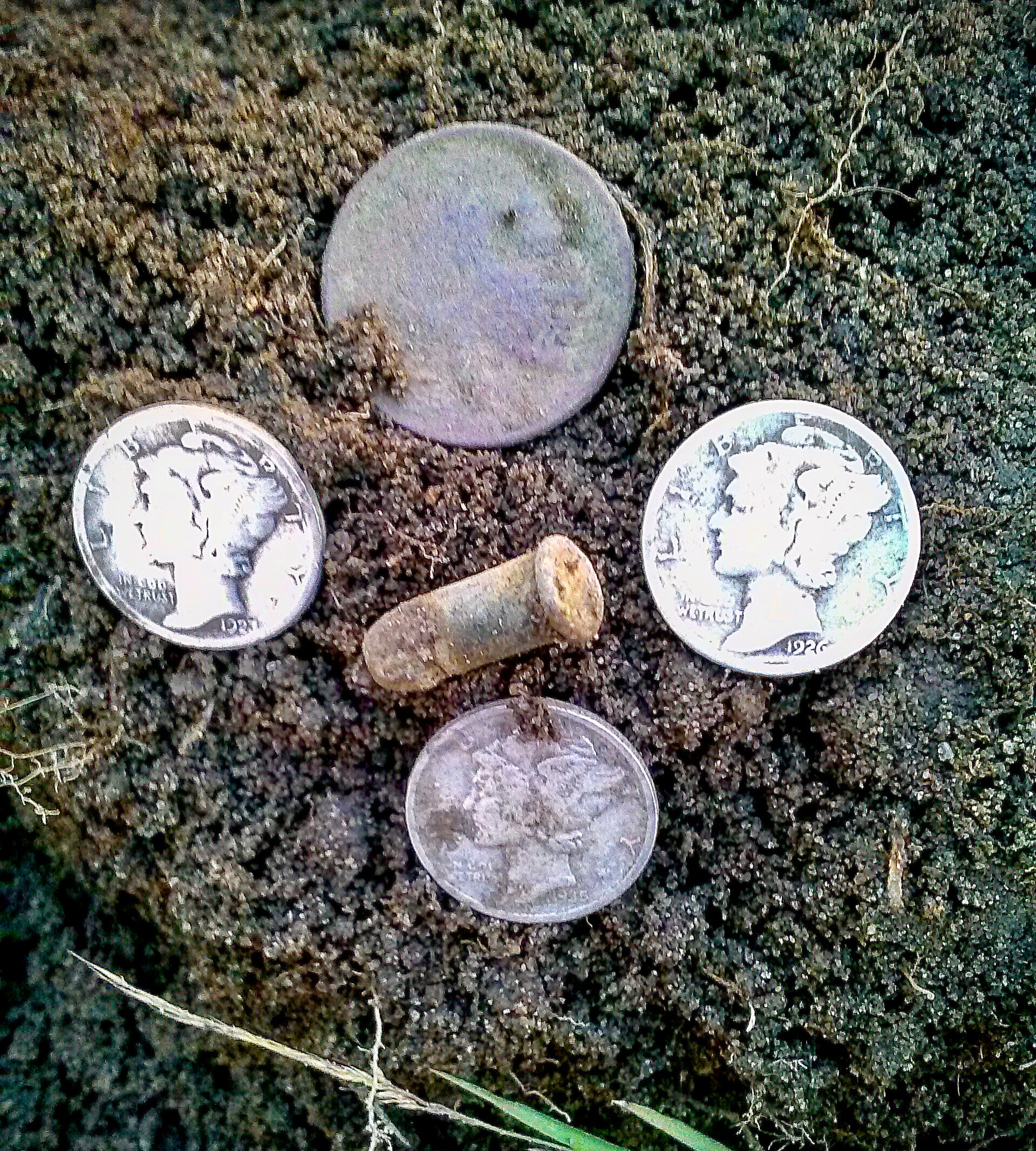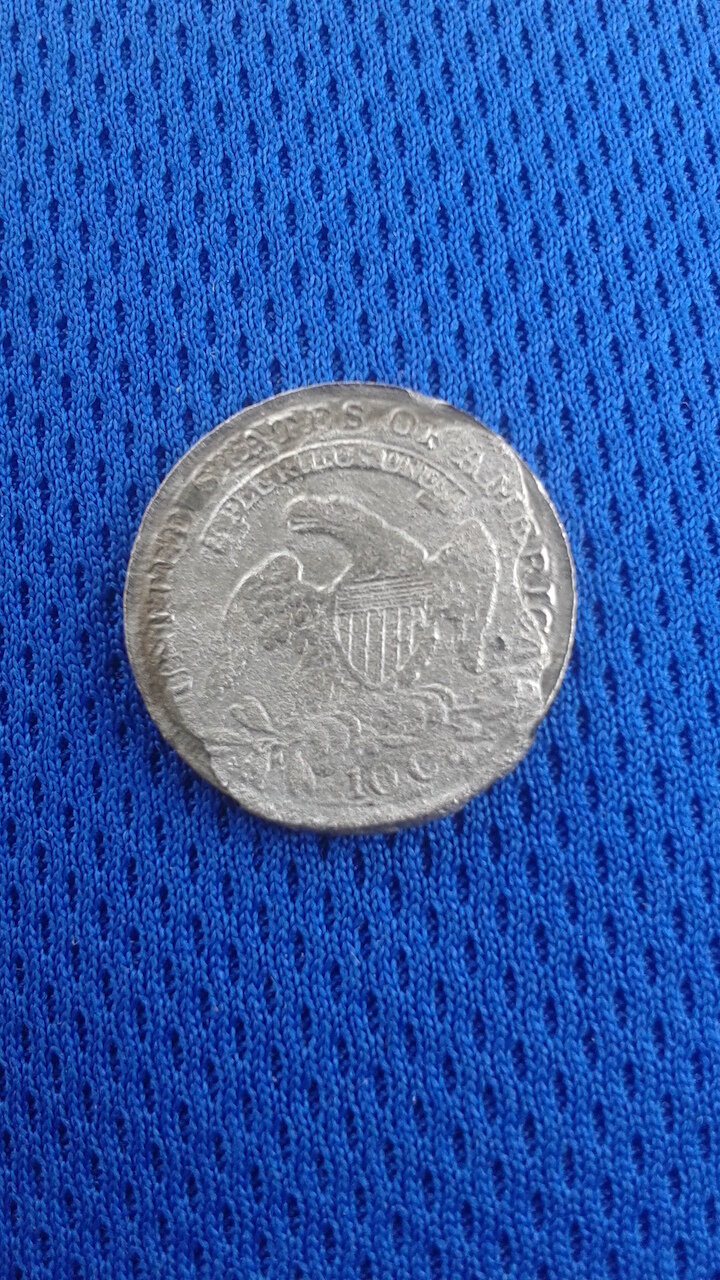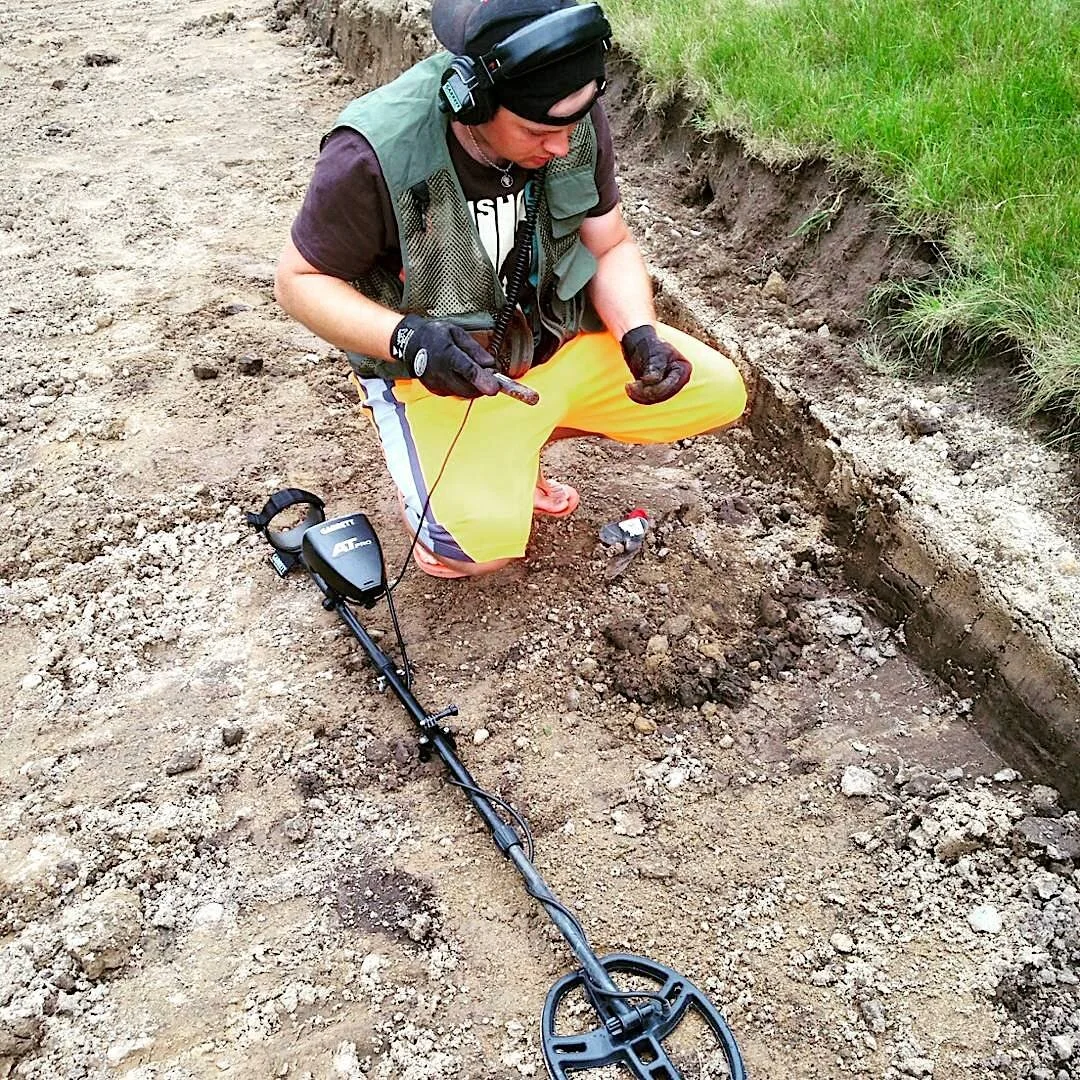Metal Detecting For Coins
Finding coins is almost a certainty when out enjoying the hobby of metal detecting and perhaps is why people want to give the hobby a try in the first place! It is important to have the metal detector set up properly so it responds to coin signals and not trash. Having a good location to metal detect will also increase the odds of finding coins with a metal detector.
Many people dream of finding troves of treasure inside of pirate chests, pots of Saxon gold, diamond rings galore, civil war relics from battle sites, and even things out of this world such as meteorites!
All of those thing are possible and have been found before with a metal detector, but they are far and few between.
However, finding coins both new and old with your metal detector is a guarantee if you are willing to put in a little time and effort in order to learn your machine, do the research on places to go metal detecting, and of course, be willing to dig for your treasures!
**DISCLAIMER - As an Amazon Associate I earn from qualifying purchases. The links in the article are affiliate links that help support this blog and my channels. Metal Detecting Life is supported by you, the readers! When you purchase something I recommend via my links, I may get an affiliate commission (terms of service) — but it never affects the price you pay. Cheers!
TO LEARN MORE
READ THIS PAST ARTICLE
What Is A Coinshooter?
In the metal detecting community, you will hear or read the term “coinshooter.” In this context, the term coinshooter refers to a person who is metal detecting with the sole purpose of finding coins. Many metal detectors have a feature on them called “discrimination,” which allows the person operating the machine to pick and choose what type of targets the metal detector will respond to as it scans the ground.
I like to metal detect in style with shirts like this one that I can get on Amazon.
One program a coinshooter will use on their machine to discriminate for coins is a program on the detector often called “coin mode.” This allows you to only pick out signals that could be coins and will leave all other targets discriminated out and inaudible on the metal detector.
This strategy of only looking for one type of target is also known as “cherry picking” and if you’re ever in a park or playground and notice there are no coin signals anywhere, it is highly possible someone has already gone through and cherry picked that park for coins.
Where To Find Coins?
The good news for those of us that are metal detecting for the purpose of finding coins is that you can find them anywhere you go! If people have set foot in a place, you can bet that there were coins left behind at some point. Because of the amount of coins lost throughout history, being able to find them is inevitable, it’s just a matter of time until you start finding them.
However, if you are looking for old coins in the US, perhaps ones made of silver (pre-1964), then you may have to do a bit of research prior to going out detecting in order to find coins that old.
Metal Detecting For Old Coins
Metal detecting for older coins can be a bit difficult because people have been metal detecting for decades and as you can imagine, they’ve been finding coins in many common places such as parks throughout the years.
That doesn’t mean you won’t find any old coins at a park however, because it is nearly impossible for someone to completely metal detect a site clean. As technology has gotten better, machines have become more powerful and sensitive, allowing you to detect targets that are deeper in the soil.
Even with technology improving, you still need to take time and learn your metal detector because those targets can be tricky to hear and over the course of time, you can bet that more trash has been dropped on top of those coin targets, making them very difficult to hone in on. That is why you should just go ahead and dig all targets until you become very familiar with your metal detector.
I have pulled many old coins such as indian head pennies and mercury dimes out of a hole along with rusty nails that were right next to those coins, making them sound very choppy on the detector prior to digging.
Coin Spills
I found these three indian head pennies stuck together as a coin spill, 10 inches down, at an old camp retreat center.
Finding one coin can at the bottom of your plug can be exciting, but imagine finding five or six coins in the hole, especially if they are old! This is called a coin spill.
A coin spill is something that happens when a person sits or lays down and while there, all of the coins accidentally fall out of their pocket, creating a small treasure trove to be found later because all of the coins will remain right next to one another.
Finding a coin spill is a bit of a rush and is one reason you should always rescan your plug after recovering a target because it is possible more targets lay at the bottom of the hole, waiting to be recovered. You’ll know a coin spill when you dig and begin pulling up coins that are stuck together.
In several instances, I have dug penny coin spills where they had a green patina all over the coins, but because they were stuck together, the two sides that were touching looked like new when I popped them apart. This is because when they fell out of that individuals pocket, they landed on top of one another and sat just like that for many, many years!
How To Tell A Coin’s Signal On A Metal Detector
When you are metal detecting for coins, it is important to understand what your metal detector is trying to tell you. Just like all types of targets, coins have a unique sound or target ID that your metal detector will give you based on the type of metal the coin is made from.
Using a visual display like the one on the Garrett AT Pro can help you narrow down what type of target may be below the surface. You can also use it to have a good idea where coins will read as when metal detecting.
Metals such as copper, aluminum, and silver will have what is known as a “high” tone on many metal detectors if your metal detector has the ability to produce multi-tone sounds. You can also expect the numbers on your metal detector to be higher as well for those detectors that have a visual display.
Because coins are very consistent in how they are made based on the metal percentage in each coin, they will remain very consistent in the sound and numbers given by your metal detector.
For instance, a modern quarter on a Garrett AT Pro, which I use, will have a very high pitched tone in “Pro Zero” mode and will consistently read as an 86 on the screen in my region’s soil conditions. When I get this on my AT Pro, I can usually bet that I’ll find a modern quarter at the bottom of the hole.
Metals such as nickel however will have more of a “mid tone” sound and not quite as high of a number on your metal detector’s display. Using the Garrett AT Pro example again, a modern nickel will have that mid tone in Pro Zero mode and typically read as a 51-52 on the visual display.
What can be deceiving is that modern pull tabs will read as a very similar mid tone and read as a 53-55 on the visual display, so they are nearly identical to a nickel. What is even more deceiving is that gold rings will also sound like a mid tone and will also read in the 50s on the visual display, so you really do have to dig everything!
Looking For Treasure?
Depending on what you are hoping to find, here are 10 places you can easily go metal detecting in hopes of finding treasure! At the very least, you’ll have fun learning your machine.
Summary
Not all metal detectors are made the same and is why it is very important you spend the time learning what your metal detector is trying to tell you and what the different modes are capable of doing so that you have the best chance to go out and find coins while metal detecting!
In the comments below, let me know what your favorite type of coin to find is or what the oldest coin you’ve found to date is and what type of site you found it in.
For instance, my oldest coin (above) is a lovely capped bust dime from 1836 and I found it in ankle deep water in a local lake where the town wasn’t even incorporated as a village until 1891. I can only imagine who held this coin, what they did to earn it, and what they had planned to spend it on.
I also can only imagine the stories this coin could tell as it sat there and watched history pass by, which is why I love metal detecting for coins.
*As an Amazon Associate I earn from qualifying purchases.






















